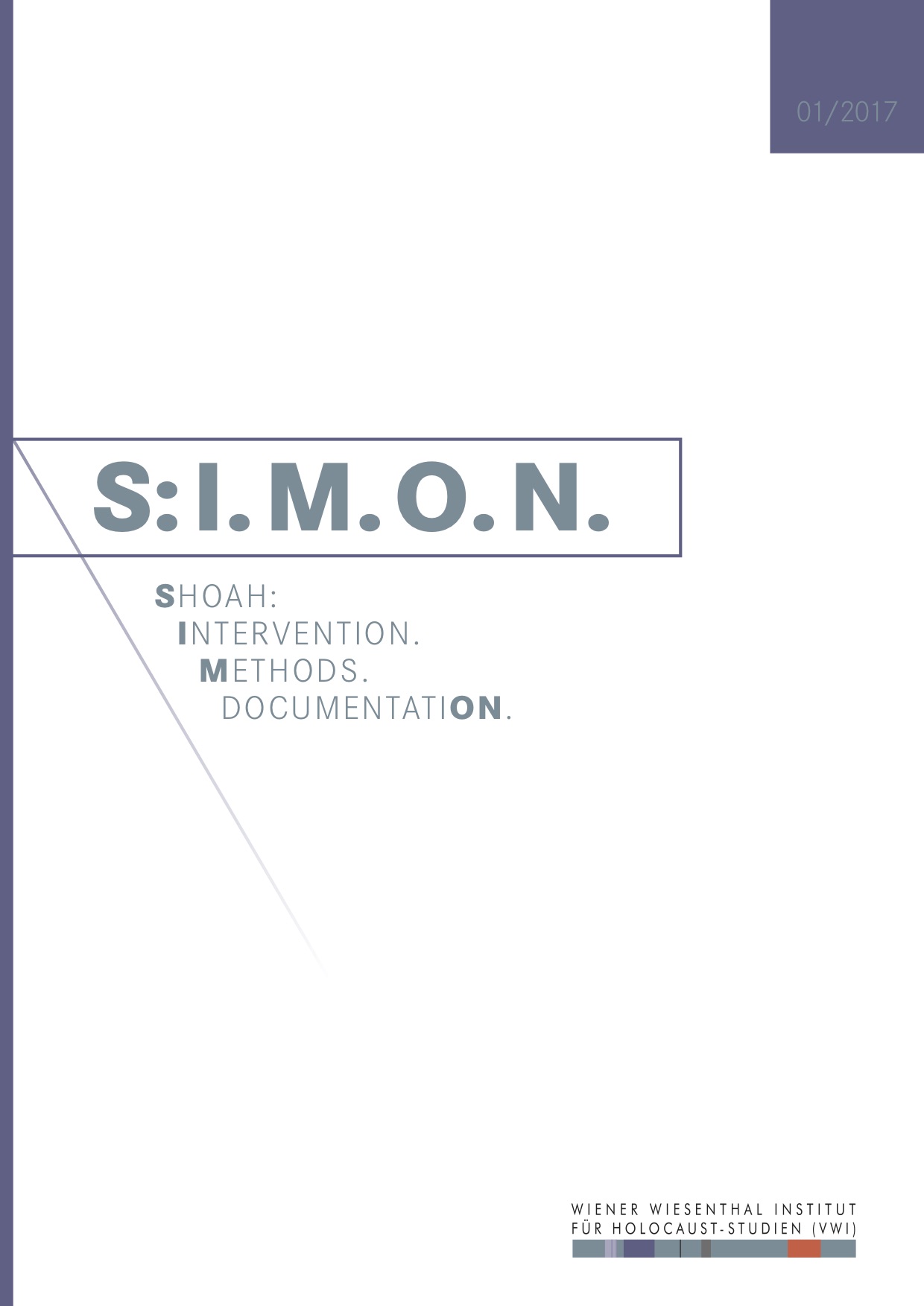From War Neurosis to Holocaust Trauma - An Intellectual and Cultural History
From War Neurosis to Holocaust Trauma - An Intellectual and Cultural History
Author(s): Ferenc ErősSubject(s): Cultural history, Recent History (1900 till today), Psychoanalysis, Health and medicine and law, WW II and following years (1940 - 1949), History of the Holocaust
Published by: Wiener Wiesenthal Institut für Holocaust-Studien
Keywords: psychoanalysis, trauma; Sándor Ferenczi; Holocaust; mass mobilisation; war neurosis; shell shock; Sigmund Freud; PTSD;
Summary/Abstract: This paper outlines a historical and critical survey of the contribution of psychoanalysis and other ‘psycho-sciences’ to our contemporary understanding of Holocaust trauma. It argues that the theme of mass traumatisation effects originates in the use of psychiatric knowledge and procedures during the First World War. As part of the war machine, psychiatry had special functions in the mobilisation of the masses as well as in the treatment and rehabilitation of those soldiers who suffered from ‘shell shock’ and later developed ‘traumatic neurosis’ or ‘war neurosis’. The main task of psychiatrists at that time was to cure these soldiers as quickly and effectively as possible – in order to send them back to the same dangerous circumstances, which had caused their symptoms in the first place. In treating war neurotics, brutal punitive methods such as painful electric shocks were frequently used. Based on archival sources, and on the correspondence between Sigmund Freud and Sándor Ferenczi, the application of these methods is illustrated here through the example of a Hungarian military doctor, Viktor Gonda. The majority of army doctors regarded war neurosis as a character deficiency, a sign of a ‘feminine’ character. It was thought that this kind of ‘male hysteria’ could also affect ‘healthy’ soldiers, destroying their will, determination, patriotism, and heroism. By contrast, the psychoanalytic conception of war neurosis developed by Sán- dor Ferenczi in Hungary and by Karl Abraham and Ernst Simmel in Germany was intended to be a humanising alternative to the dominant, mainly ‘punishing’ and torturous procedures applied by mainstream military psychiatry. Psychoanalysts emphasised the importance of understanding the patient’s symptoms, assuming that their explanation originated in the patient’s life history and unconscious motives rather than exclusively in external, physical causes. The psychoanalytic approach to war neurosis anticipated later debates on the nature of individual and collective psychological traumata. This paper surveys the impact of the First World War on the development of the theory and technique of psychoanalysis, including the concepts of Freud, Ferenczi, Melanie Klein, Abram Kardiner, and others. After the Second World War, psychoanalysis was preoccupied with the exploration of the ‘Nazi mind’, the specific psychological and characterological traits of war criminals, their supporters, and their collaborators. This paper argues that the existence of a Holocaust trauma as a separate group of symptoms was for a long time not really acknowledged. The focus only shifted from perpetrators to victims in the 1970s, due to the introduction of the diagnostic category of PTSD (post-traumatic stress disorder) into the vocabulary of psycho- analysis. This paper, however, argues that the concept of PTSD preserved, in some ways, the dominant discourse of First World War psychiatry, continuing, in a subtler way, to stigmatise or blame the victims.
Journal: S:I.M.O.N. Shoah: Intervention. Methods. Documentation.
- Issue Year: 4/2017
- Issue No: 1
- Page Range: 41-58
- Page Count: 18
- Language: English

